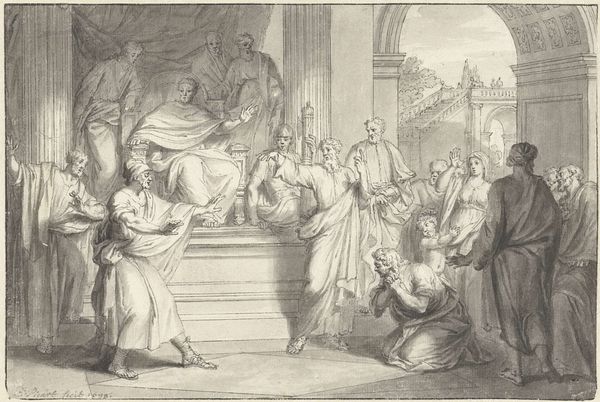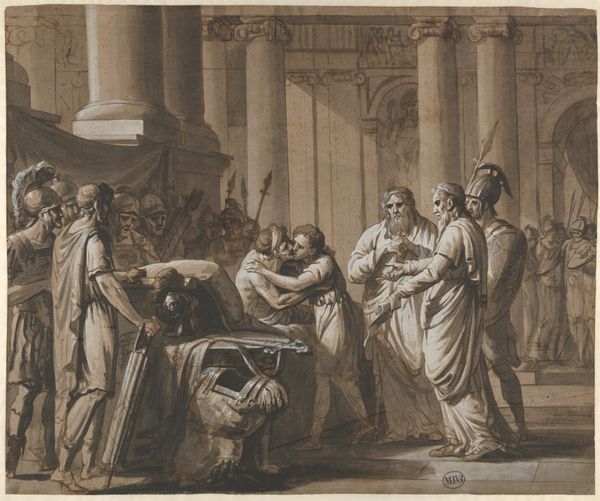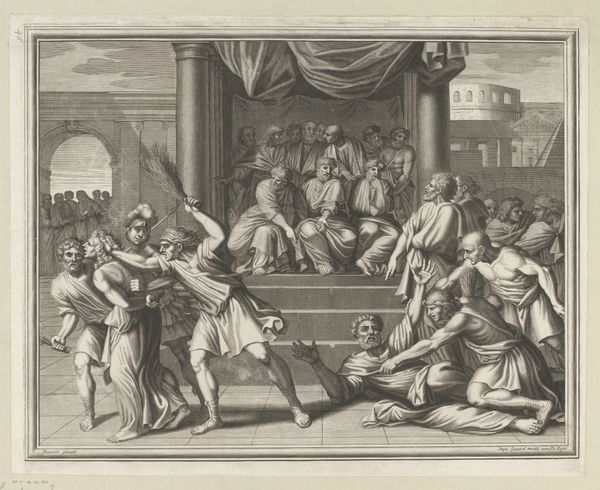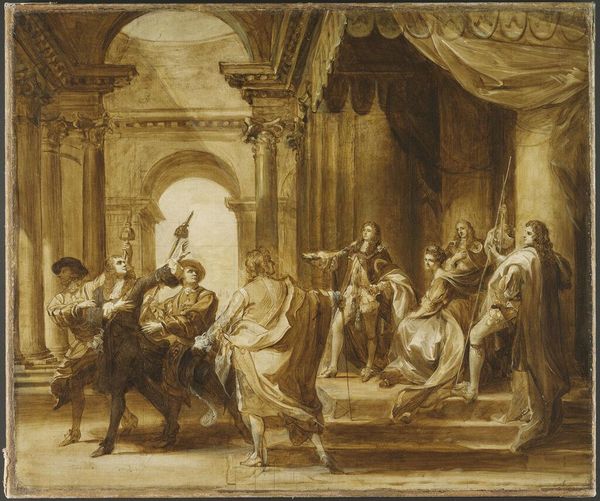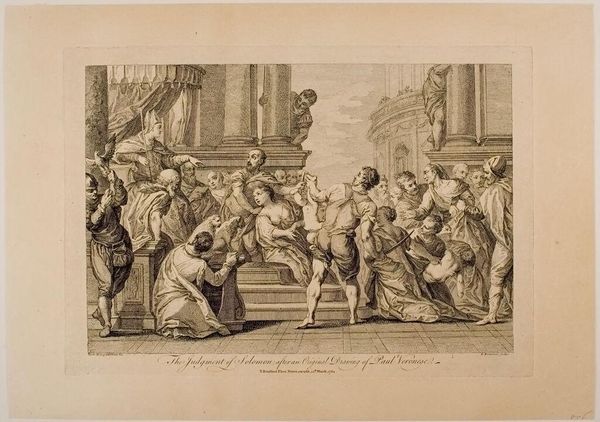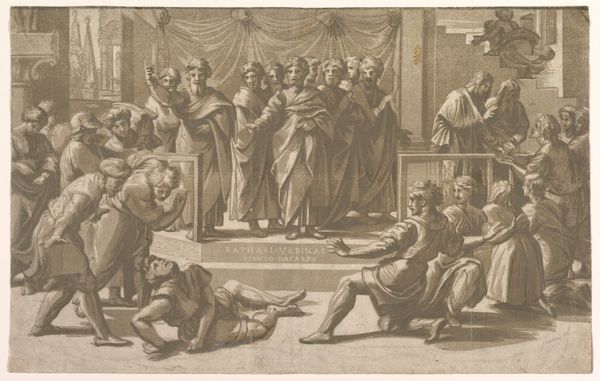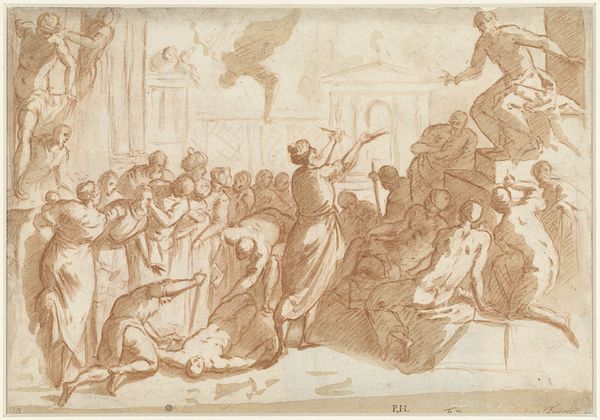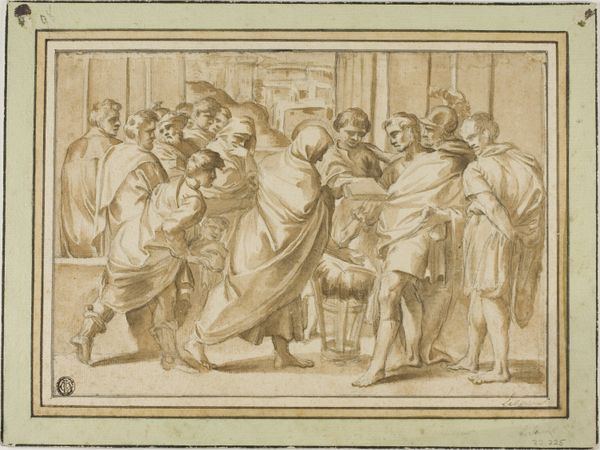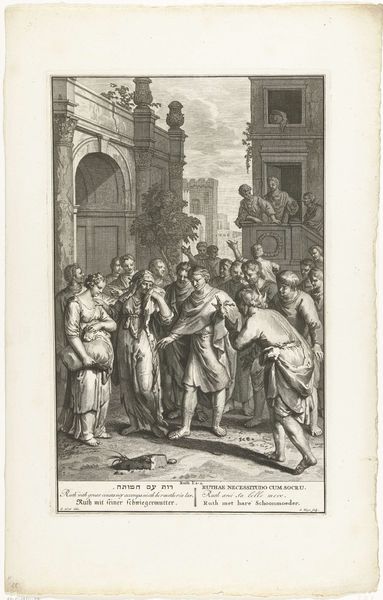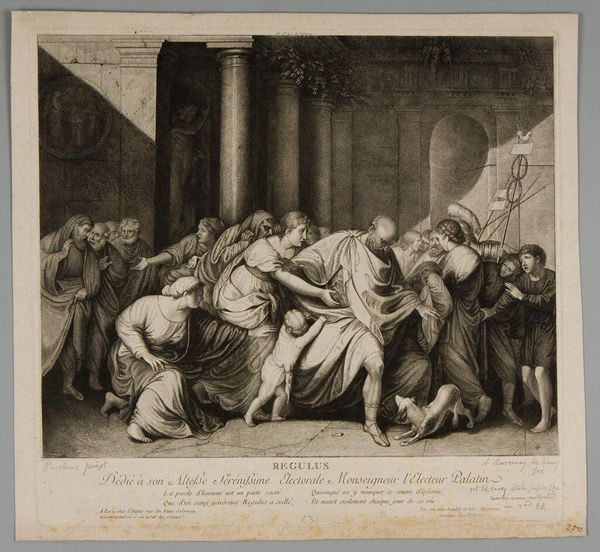
Leonidas II, king in Sparta, rushes towards the failed Cleombrotos, who fled to the temple of Neptune with his wife Chilonis, daughter of Leonidas, and the children
0:00
0:00
#
toned paper
#
pencil sketch
#
charcoal drawing
#
charcoal art
#
pencil drawing
#
coffee painting
#
underpainting
#
portrait drawing
#
charcoal
#
watercolor
Copyright: Public domain
Vincenzo Camuccini made this ink and wash drawing, titled *Leonidas II, king in Sparta, rushes towards the failed Cleombrotos*, in Italy in the late 18th or early 19th century. Camuccini was part of the Neoclassical movement, and the drawing depicts a scene from ancient Sparta, with the king, Leonidas, confronting his daughter's husband, Cleombrotos, who has failed him. The image creates meaning through visual codes associated with classical antiquity, such as the temple setting, the idealized bodies, and the references to historical figures. Neoclassical artists looked to the art of ancient Greece and Rome for inspiration, emulating their emphasis on order, reason, and balance, which was promoted in the art academies. Camuccini’s work reflects the social structures of his time, particularly the revival of conservative values and the importance of family and civic duty. Historians use a variety of research resources to understand art, including archival documents, biographies, and art criticism. We interpret art as contingent on its social and institutional context.
Comments
No comments
Be the first to comment and join the conversation on the ultimate creative platform.

